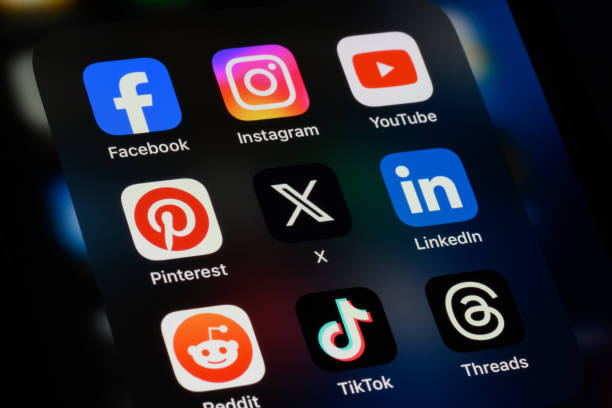Email marketing remains one of the most effective channels for building a consistent, trusted connection with clients and prospects. Unlike social media—where algorithms dictate who sees your posts—emails land directly in your audience’s inbox, offering a personal, reliable touch.
For counselors, email marketing delivers several advantages:
- Fosters trust and credibility through regular, thoughtful communication.
- Keeps your practice top-of-mind, helping subscribers remember you when they’re ready to book.
- Encourages consistency in professional development—share insights, helpful tools, or new availability.
- Drives client engagement through curated content, scheduled workshops, or seasonal reminders.
Plus, email marketing offers measurable data—open rates, click-throughs, and conversions—allowing you to refine your messaging based on what resonates with your audience.
1. Defining Your Email Strategy
Before you hit “send,” a successful email marketing plan begins with clarity.
Identify Your Purpose
Ask yourself:
- Are you nurturing leads who’ve requested information?
- Providing ongoing value to current clients?
- Promoting workshops, webinars, or group services?
- Sharing mental health insights and resources?
Your purpose determines email type, tone, frequency, and content.
Know Your Audience
Understand who’s on your list:
- New prospects seeking a counselor
- Current clients with active sessions
- Past clients who may return for booster sessions
- Professional contacts or referral sources
Segmenting your list ensures each group receives relevant content, making your emails feel thoughtful and personalized.
2. Building a Strong Subscriber List
A meaningful email list starts with thoughtful consent and trust-building.
Use High-Converting Opt-Ins
- Place opt-in forms on your homepage, blog posts, and resource pages.
- Offer valuable incentives: a self-help guide, mental wellness checklist, or tips for handling stress. Highlight that these are from Mental Health IT Solutions.
- Keep forms simple: ask only for email and first name to reduce friction.
Use Double Opt-In
Confirm subscription by sending an initial email requiring users to verify their address. This method increases engagement and reduce spam complaints.
Promote Across Channels
- Include signup links in your email signature.
- Post signup invitations on your social media.
- Offer email-exclusive promotions for your workshops and events.
3. Choosing the Right Email Service Provider
An Email Service Provider (ESP) helps you manage your list and send professional emails.
Look for a tool that offers:
- List segmentation—so you can tailor messages.
- Automated sequences—for drip campaigns, onboarding, and follow-ups.
- Templates—that align with your brand’s visual style.
- Analytics dashboards—tracking opens, click-throughs, and unsubscribes.
Popular ESPs like Mailchimp, ConvertKit, and ActiveCampaign are counselor-friendly and scalable as your practice grows.
4. Crafting High-Impact Email Content
Define Your Voice & Tone
Align your emails with your brand persona. As a counselor, your tone should be warm, empathetic, and professional, creating a sense of calm and encouragement.
Vary Content Types
- Welcome Series: A warm introduction email, followed by an outline of your counseling approach, values, and next steps.
- Educational Emails: Provide bite-sized guidance on managing stress, coping strategies, or navigating relationships.
- Event Invites: Promote webinars, group sessions, or workshops.
- Practice Updates: Share new availability, holiday scheduling, or group openings.
- Testimonials & Successes: With consent and confidentiality in mind, share anonymized client feedback that illustrates transformation and trust.
Structure for Scannability
Ensure readability by:
- Having a short, enticing subject line (e.g., “3 Signs You Need a Check-In This Week”).
- Opening with a personal greeting and brief narrative.
- Using bullet points for clarity.
- Including one clear CTA—“Book a session,” “Download the checklist,” or “Learn more.”
- Ending with a gentle, supportive close and clear unsubscribe link.
5. Automating Email Campaigns
Automation can significantly reduce your workload and improve client experience.
Onboarding Sequence
Trigger when someone signs up:
- Welcome and introduction
- Next steps and what to expect
- Self-guided resources or free content
- Invitation to schedule an intro call
Abandoned Inquiry Follow-Up
If someone requests info but doesn’t schedule, send a reminder email with a supportive tone and offer to help answer questions.
Ongoing Newsletters
Once or twice a month, send a newsletter featuring articles, events, client tips, or seasonal themes like holiday coping strategies. Include a reminder about booking sessions.
Re-Engagement Campaign
If someone hasn’t opened emails for 6+ months, send a check-in message: “Hey, we haven’t heard from you—how are you doing? Can I be of support?”
6. Measuring Performance & Refining Strategy
Use your ESP and tools like Google Analytics to track metrics:
- Open Rate: Average for counselors is around 20–25%. If yours are below that, try new subject lines or send times.
- Click-Through Rate: Aiming for 2–5% is realistic. Add buttons, list links, and clear CTAs to boost clicks.
- Conversion Rate: Track how many subscribers book sessions via your emails.
- Unsubscribe & Spam Rates: Below 1% unsubscribe; zero spam complaints.
A/B test elements like subject lines, CTAs, and content styles. Adjust frequency, tone, and topics based on open and click trends.
7. Best Practices to Avoid Common Pitfalls
- Stay compliant: Follow CAN-SPAM, GDPR, and other privacy laws. Include clear unsubscribe links.
- Avoid over-emailing: Two to four emails per month is sufficient—quality over quantity.
- Protect privacy: Never share client identifiers. Anonymize testimonials and info.
- Ensure accessibility: Use alt text, clear fonts, and proper heading structure in your emails.
- Keep emails focused: One main message per email prevents subscriber overwhelm.
8. Integrating Email with Your Website & Brand
Every element of your email marketing strategy should connect to your brand and website.
- Consistent visuals: Use your logo, colors, and fonts in email templates.
- Link back to your site: Include easy links to your Services, Blog, or Contact page.
- Create evergreen content hubs: Drive ongoing interest through “Resources” like self-care guides and workshops linked in each email.
- Reinforce brand values: Remind subscribers why you’re different—your therapeutic approach, compassion, and client-first philosophy.
Check the expert email marketing services at Mental Health IT Solutions to ensure your campaign aligns perfectly with your brand identity and attracts the clients you’re meant to help.
9. Frequently Asked Questions (FAQs)
How often should I send emails as a counselor?
Aim for 2–4 per month. Consistency builds trust without overwhelming your audience.
What’s a good email length?
Keep it short—about 150–250 words—or longer if sharing meaningful stories or resources. Always include a clear CTA.
Is it okay to promote services in emails?
Yes—just strike a balance. Combine service promotion with genuinely helpful content to avoid feeling overly salesy.
Should I personalize emails?
Absolutely. Use first names, reference past interactions, and tailor content based on list segments to create a more meaningful connection.
What tool should I use for email marketing?
Choose an ESP that supports list management, segmentation, automation, and follows industry best practices for deliverability and privacy.
10. Conclusion: Nurture, Connect & Grow
Email marketing offers counselors a unique way to deepen relationships, reinforce trust, and build a vibrant practice. By implementing a thoughtful strategy—centered on consistency, quality content, and measurable results—you can create a supportive space that feels like a warm conversation in your subscriber’s inbox.
Ready to take your email marketing to the next level? Visit Mental Health IT Solutions for expert guidance.







